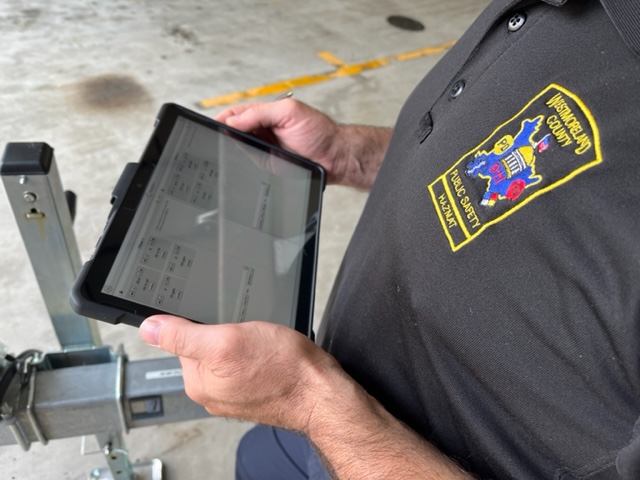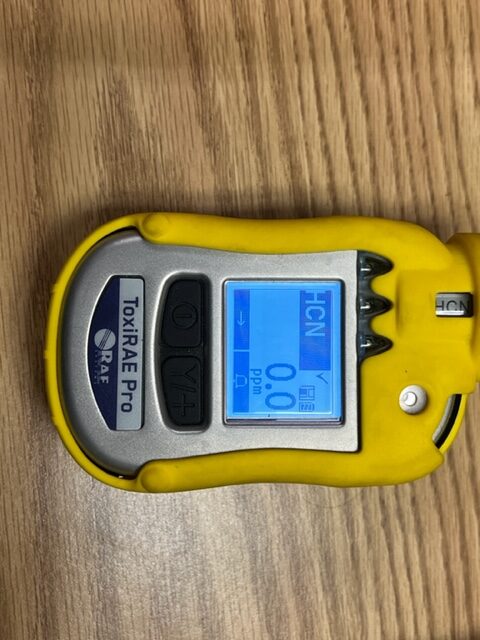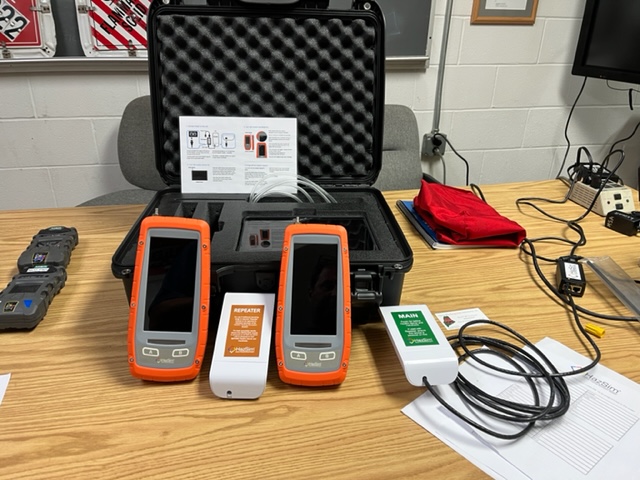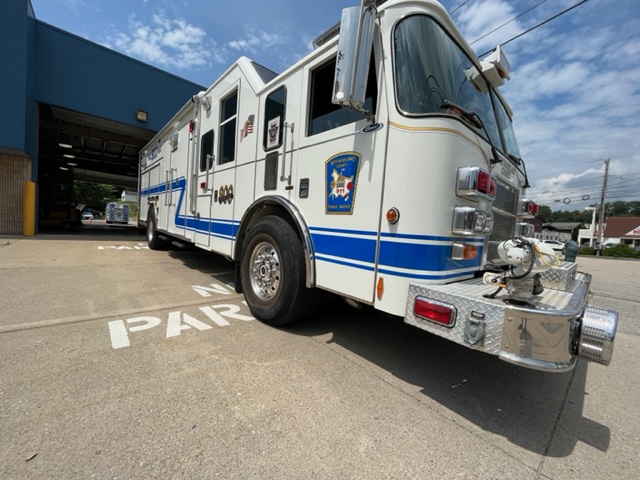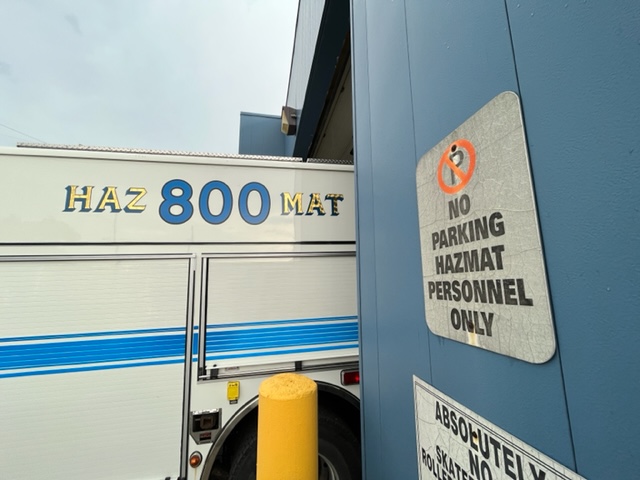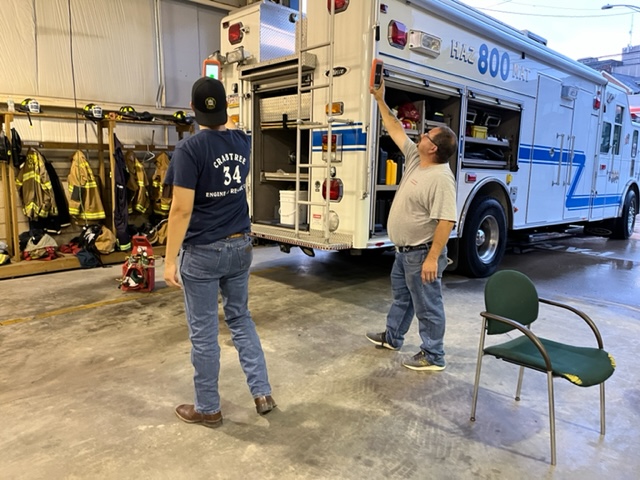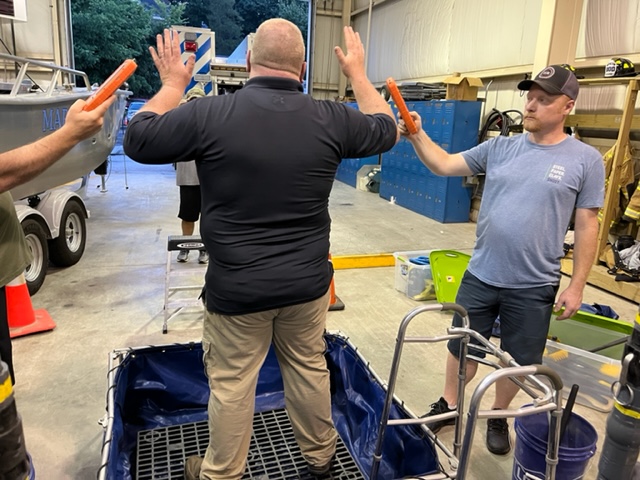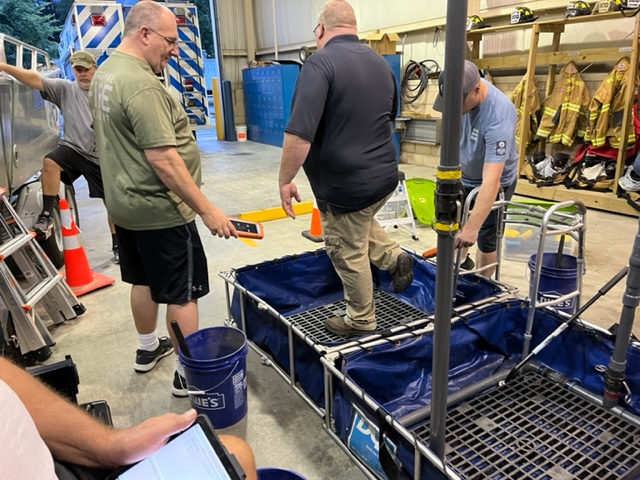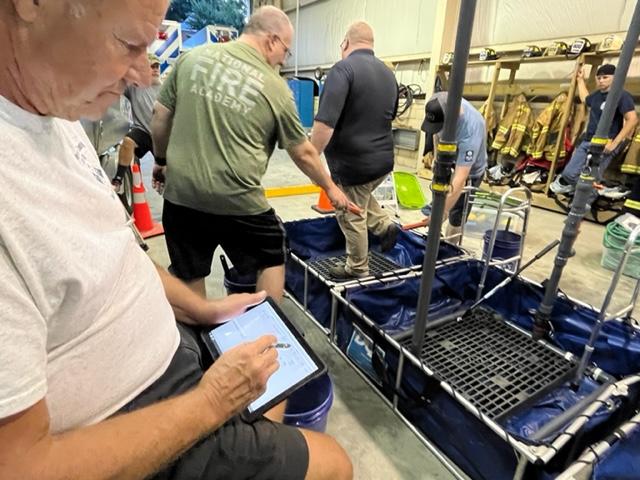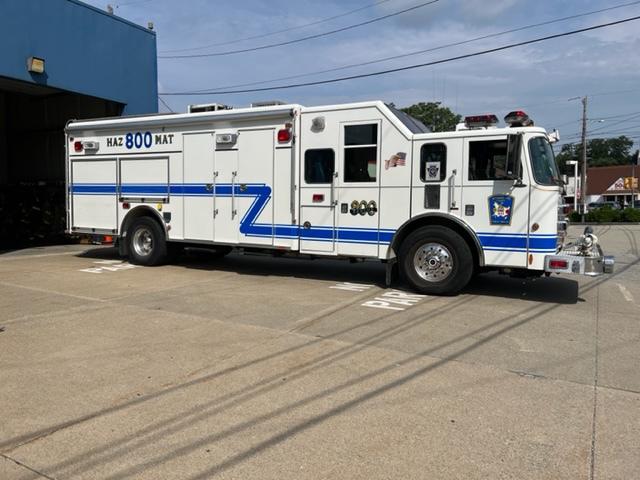Formed in 1980, Pennsylvania’s Westmoreland County Hazardous Materials Response Team 800 grew from an initial 15 volunteer members to 70 members today. Still volunteers, the members belong to fire, EMS and law enforcement agencies across the county and respond to both hazmat and RIT calls.
Training is a high priority for the team. We sat down with HazSim customer Chief Christopher Tantlinger to talk about how he keeps his team ready to respond. Chief Tantlinger became a firefighter in 1992, and served as chief engineer for about 15 years until he was hired as county hazardous materials coordinator and joined the county response team. He was trained to technician level in 2010 and appointed deputy chief in 2016. He has been serving as chief since 2019.
What type of students do you train and what facilities do you have at your disposal?
Students are peer firefighters, dispatchers, team members and hazmat technicians. Training is conducted in classrooms, stations, at emergency response exercises and in other industrial settings. There is a 160-acre state of the art public safety training facility in the county with all the props, equipment, classroom and scenario variations that would be in the field. We can train at any fire station, the local airport and various waterways and reservoirs.
How do you mix up the training scenarios so they don’t become predictable or stale?
We use existing plans and studies that provide hazmat vulnerabilities of commodities that are part of our industrial business, transportation, pipeline, toll road or other county-identified hazards, in conjunction with a prescribed training plan every month. We integrate the state fire commission curriculum and instructors with scenario-based “in the news” hazmat incident case study reviews.
What’s the key to best preparing responders to handle real scenarios outside of the controlled training environment?
The most important key is creating simple scenarios that address a single fundamental, and then add layers of real-world activities. Ask the student learner often, how do you see this playing out in the real world and why? Games and playground-like activities filtered into training that you would never experience do not particularly add to responder confidence. If you want a responder to be ready for a down-range obstacle, create the real obstacle and practice the resolution.
What is your biggest obstacle when conducting hazmat training?
Time is the biggest obstacle because so many things compete for time, and information is so much more available. There is not enough time to look at the “brilliance of tactics” that plays out on social media or other “you gotta look at this cool trick I found on video”, or the plunders and fails that are so viral that we see people sharing more negative tactics than positive fundamentals. Everyone is a critic, and those discussions steal time from positive fundamental reviews.
What wicked training problem keeps you up at night?
Wicked training problems don’t haunt me. I just keep rolling with positive, real, simple, fundamental, evolutions.
What devices do you rely on most for realistic training?
We really try to use every device we have in our toolbox and go through the fundamental, field environment, touch the tool and practicality utilization step by step. We try to create a mini hazard, much like a mini candy bar, that just gives you a taste of what the hazard implication is, and solve the problem quickly.
How do you alter training for new responders versus seasoned veterans?
Seasoned veterans are encouraged to show them, tell them how to do the task and not just look at how I do it, if there are new kids on the block. An incentive plan is in place that excludes officers, so new productive personnel have a chance to be considered for the responder of the year.
How do you keep the classroom portion of hazmat training fresh?
Classroom must be a fraction of the activity, always. Unless it’s a certified pro-board position enhancement, the learning is always a one-page, fundamentals first. The remainder of class is evolutions and discussions — and then discussions and evolutions. Also, mix an advanced knowledge task with a simple, easy task and let the student explain the merge point significance, because that is where the learning occurs.
What’s the optimum class size and why?
Optimum is 8.3. You coach/teach five to play basketball, nine for baseball and 11 for football. Everything we do is teamwork, and we really don’t need to coach/teach individual instruction because emergency response is not an individual endeavor. And we don’t need to coach/teach the fans or crowd, which is usually more than 11, there to watch — their opinions are not valid in the coaching/teaching environment. Therefore, I like the average of 8.3 to teach someone the response game. And, we know that there is always that one person who may not be all that into the program, but we teach them anyhow — so they are the point-three.
What’s been your biggest “ah-ha” teaching moment?
The ah-ha moment doesn’t really occur in the teaching environment; there are periods of enlightenment. The real illumination comes when you see an operation in the field that a student employed that solved a problem or made the scene better for everyone. It is seeing a person you may have shown a mental technique or tactic who had learned something from your efforts to help them be the best responder possible. It changed my technique in teaching to the curriculum and pivot into finding a way to have the curriculum come alive in the student so they use the learning and training to be their tool for the solution and favorable outcome.
What role does technology play in how you teach hazmat and what do you think the future holds for it?
Technology is the leading role in hazmat learning. Hazmat is the special forces of firefighting; it is the onside kick or hands team on the football field, the designated hitter in the baseball game or the point guard on the basketball court. Technology is not necessarily the electronic, virtual gadget tool, but the efficient, conceptual use of brainpower to solve a problem.
Also Read: These cleaning chemicals do not mix, warns Westmoreland hazmat team
Your technology should be a hand, mind and special skill that can marry the reality of doing something better rather than doing it for you. Your technology only is successful if it is positive. Just remember, technology can fail us and we will still need to have the fundamentals.
The future of technology holds extraordinary capabilities for hazmat. You will be able to see, know and mitigate hazards more and more quickly, and safely. History has proved technology. You just need to prove that you are willing to learn how to use it. HazSim has provided a meaningful technology to our training program and it will be a part of each of our training evolutions. The simplicity, the ability to train a skill, to be able to feel and see the device that you use every time you respond is invaluable. To take a scenario and replicate it over and over to teach each team member or trainee opens many doors for discussions while creating muscle memory. The ease to deploy HazSim really could not be more intuitive. Within a couple clicks you create teaching moments.
